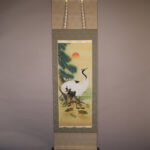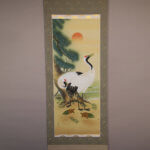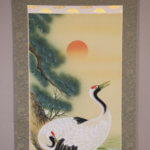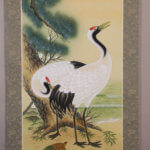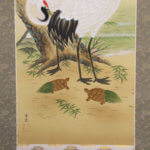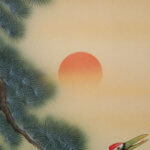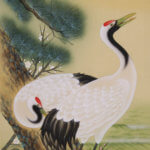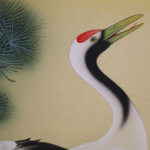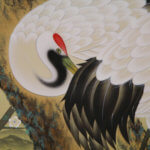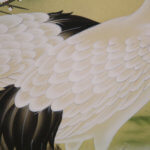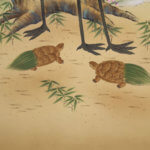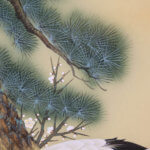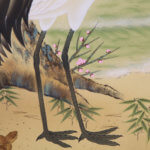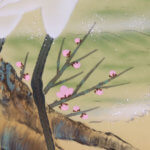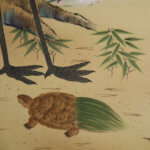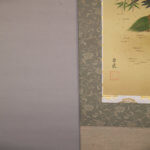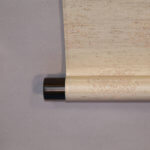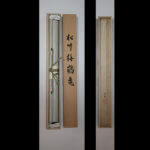Kakejiku Hanging Scroll: Okuhira Satoshi / Pine, Bamboo and Plum & Crane and Tortoise - Shōchikubai Tsurukame
- Product ID
- B0088
- Name
- Okuhira Satoshi
- Profile
A Japanese-style painter. Born in Kanagawa pref. Member of the Tōyō Bijutsu-kai. A frequent prize winner. Specialized in landscape paintings and folding screen paintings.
- Size
- 600mm x 1860mm
- Roller End Material
Redsandalwood- Material of the Work
- Silk
- Stock Condition
- Sold out
- Description
A pine tree with fresh greenery flourishing… The thick trunk covered with hard bark gives a sense of dignity because it has acquired withstanding the harsh winds and snow for many years. A couple of cranes resting their wings at the base of the pine tree, cuddling each other as if caring for each other. The sun rising from the golden auspicious clouds and a couple of turtles walking up to the feet of cranes. This is a masterpiece of Okuhira Satoshi, known for his detailed and delicate brushwork, in which he depicts, in a highly noble and refined style, the traditional auspicious themes of longevity, prosperity, and matrimonial happiness. It is a work that gives a touch of elegance to a festive occasion.


